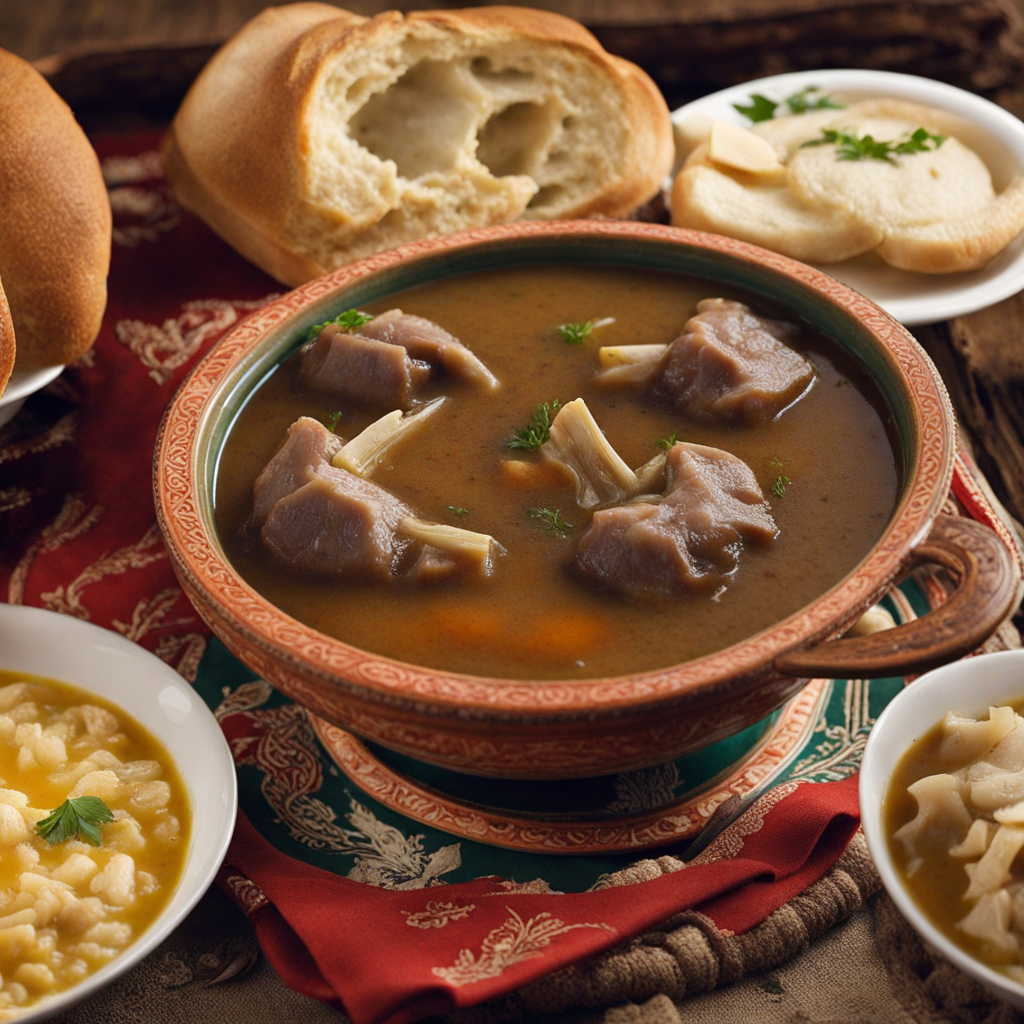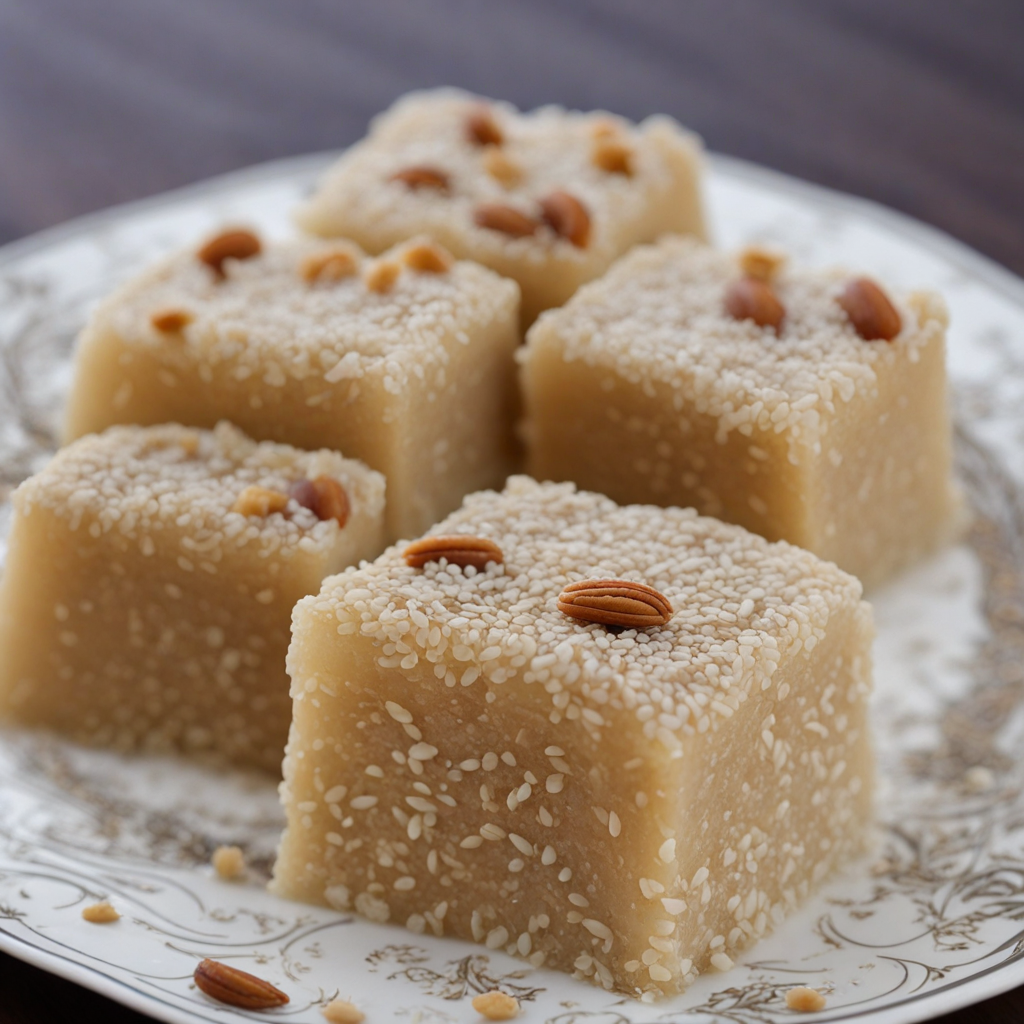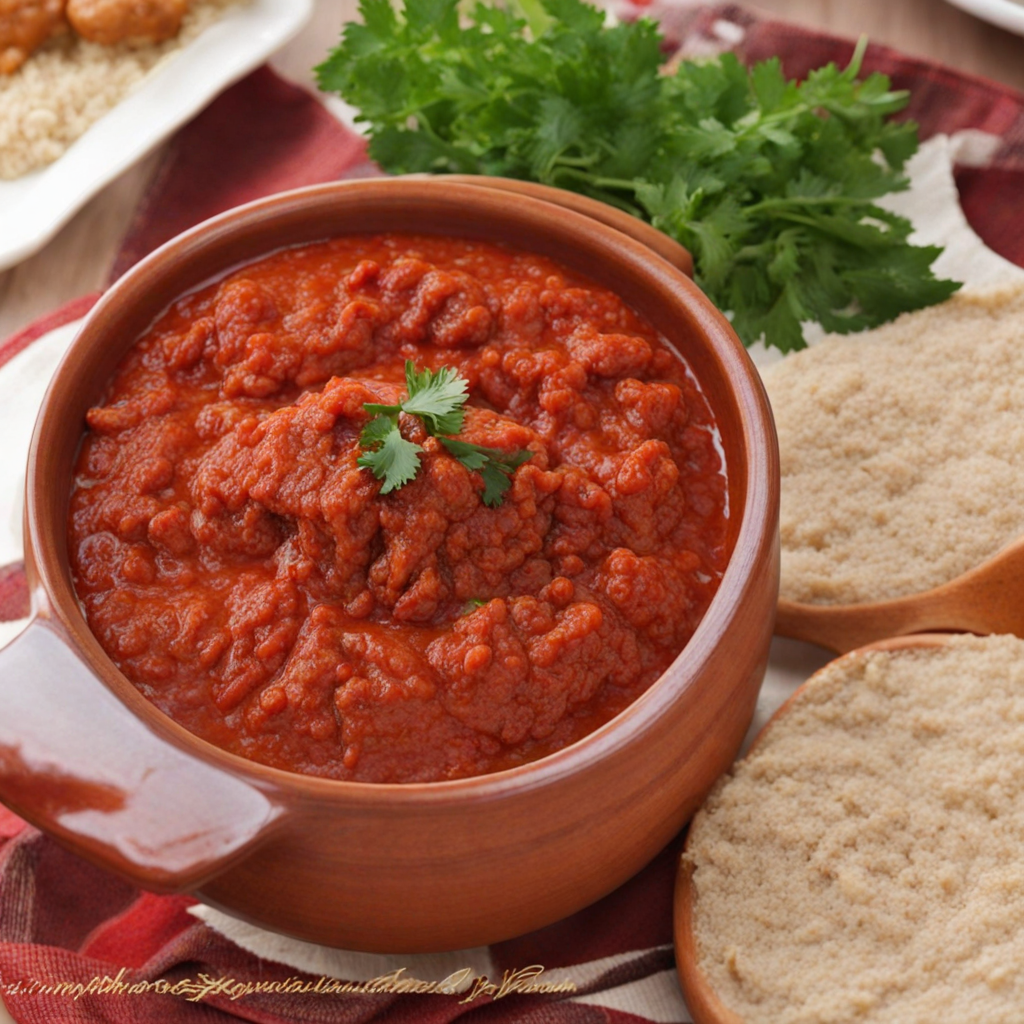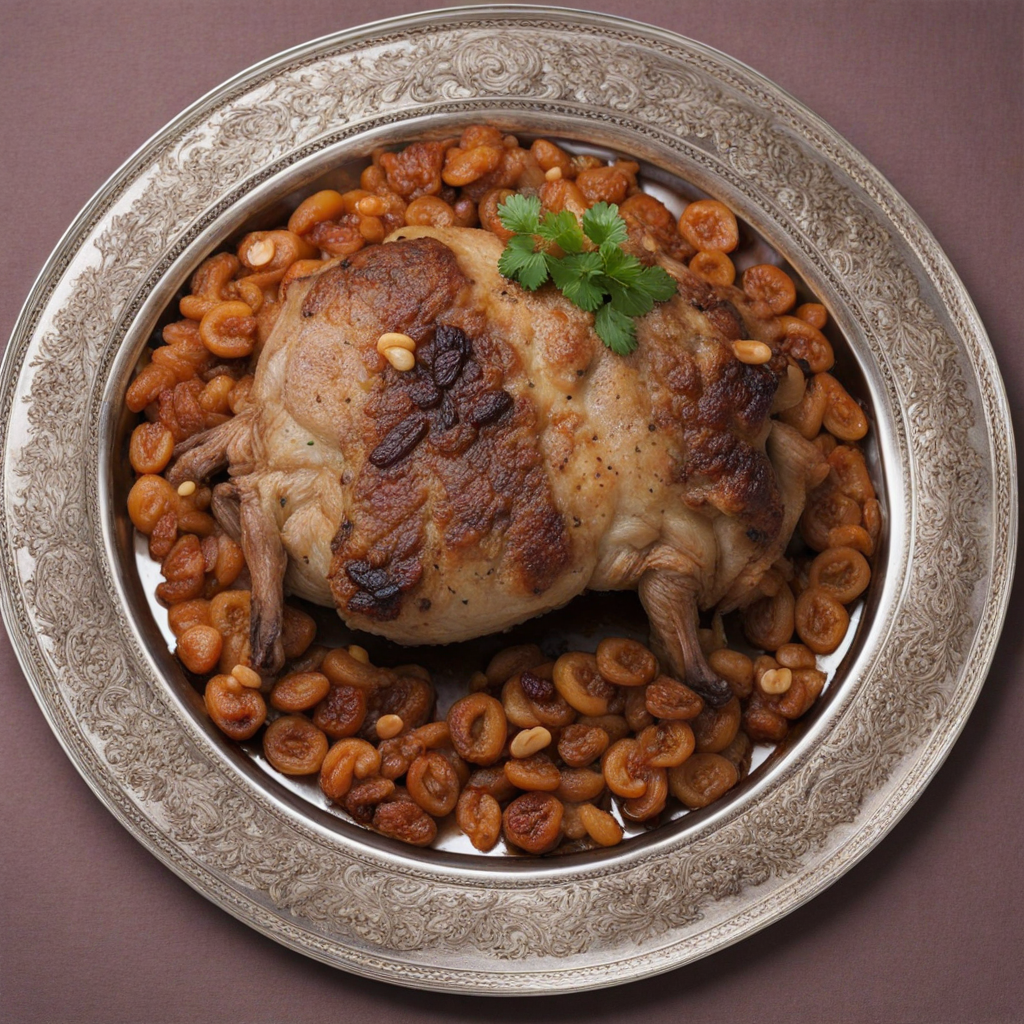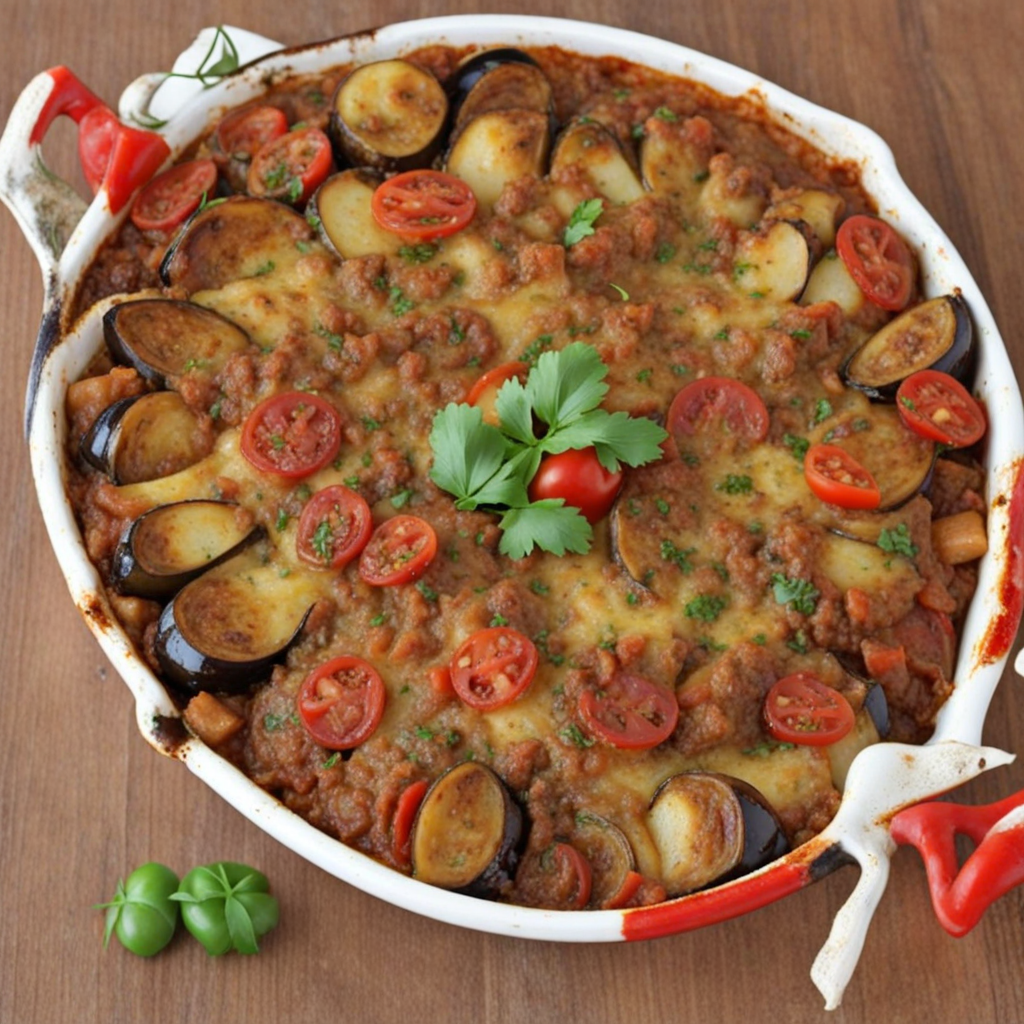Pacha
Pacha is a traditional Iraqi dish that embodies the rich culinary heritage of the region. It typically features tender pieces of lamb or goat, which are slow-cooked to perfection in a savory broth. The meat is often served with the skin and bones, which contributes to its deeply flavorful and hearty nature. The dish is often accompanied by a thick sauce made from the broth, which is infused with spices that can include cumin, coriander, and black pepper, creating a warm and comforting aroma that is hard to resist. One of the most distinctive aspects of Pacha is the use of rice or bread, which serves as the perfect base to soak up the delicious broth. The rice is usually cooked separately and can be flavored with saffron or turmeric, giving it a vibrant color and an aromatic quality that complements the richness of the meat. Alternatively, the dish can be served with flatbread that is perfect for scooping up the succulent pieces of meat and sauce, making for a satisfying meal that engages both the senses and the appetite. Pacha is often enjoyed during festive occasions or family gatherings, making it not just a meal but a communal experience. The slow-cooking method ensures that the flavors meld beautifully, resulting in a dish that is as hearty as it is flavorful. Eating Pacha is a celebration of tradition, bringing people together around the table to relish in the unique and comforting tastes of Iraqi cuisine.
How It Became This Dish
Origin of پاچة پاچة, pronounced "pacha," is a traditional dish that has its roots deeply embedded in the culinary tapestry of the Middle East, particularly in Iraq. The dish consists primarily of sheep's head, trotters, and stomach, often served with a rich broth that encapsulates the flavors of various spices and herbs. The origins of پاچة can be traced back to ancient Mesopotamian civilizations, where the consumption of offal was a practical choice, enabling communities to utilize every part of the animal. This practice was not merely about resourcefulness; it also became a culinary art as people began to develop techniques for preparing and seasoning these cuts to enhance their flavors. The word "پاچة" itself is derived from the Arabic term for the hoof, which reflects the dish's focus on utilizing parts of the animal that are often overlooked. The cultural significance of پاچة lies not only in its historical roots but also in its status as a communal dish. Traditionally, it is prepared during special occasions, family gatherings, and festivals, where it is enjoyed by many. The preparation of پاچة is often a labor-intensive process, requiring skill and time, which adds to its significance as a dish that brings people together. \n\n Cultural Significance In Iraqi culture, پاچة is more than just a meal; it represents hospitality, generosity, and the art of sharing. The dish is often prepared for guests, symbolizing the host's warmth and willingness to share their bounty. During festive occasions such as Eid al-Adha, when families slaughter sheep, پاچة becomes a centerpiece, celebrating both the religious and communal aspects of the holiday. The dish is often accompanied by fresh bread, rice, or bulgur, allowing diners to savor the rich broth and tender meat. The way پاچة is served also reflects its cultural importance. It is common for families to gather around a large platter, each person taking their share from the communal dish. This practice fosters a sense of togetherness, reinforcing familial bonds and social connections. In some regions of Iraq, the dish is even believed to have restorative properties, often consumed by those recovering from illness or fatigue, further underscoring its place in the culinary and cultural landscape. \n\n Regional Variations As پاچة has evolved, regional variations have emerged, reflecting local customs and available ingredients. In Baghdad, for instance, the dish is typically prepared with a particular emphasis on the broth, which is enriched with spices such as cumin, coriander, and lemon. Street vendors in the capital often serve پاچة late at night, catering to a clientele looking for a hearty meal after a long day. This practice has cemented its role as a beloved street food, accessible to all. In contrast, in the southern regions of Iraq, the dish may incorporate additional spices and be served with a different array of sides, such as pickled vegetables or a variety of salads. These variations illustrate the adaptability of پاچة, showcasing how it can be tailored to suit different palates while still retaining its core identity as a beloved traditional dish. \n\n Modern Development and Global Influence In recent years, پاچة has gained recognition beyond Iraq, capturing the attention of food enthusiasts around the world. As globalization progresses, Iraqi expatriates and culinary enthusiasts have introduced پاچة to international audiences, often through food festivals, cultural events, and restaurants specializing in Middle Eastern cuisine. This exposure has led to a renewed interest in traditional cooking methods and ingredients, emphasizing the importance of cultural heritage in the culinary arts. Modern Iraqi chefs are also experimenting with the dish, reinterpreting it for contemporary tastes while maintaining its essence. Some have incorporated fusion elements, blending traditional spices with modern cooking techniques, thus appealing to younger generations and diverse audiences. This evolution highlights the dynamic nature of پاچة, proving that while it is steeped in history, it is also capable of adapting to the changing culinary landscape. \n\n Health Aspects and Nutritional Value While پاچة is often associated with indulgence, it also offers nutritional benefits. The dish is rich in protein, vitamins, and minerals, stemming from the use of organ meats and bones. The slow cooking process helps to extract nutrients, making the broth both flavorful and nourishing. In traditional contexts, it is often served to those recovering from illness, attributed to its hearty and restorative qualities. In a modern dietary context, however, the consumption of offal has raised conversations about health and sustainability. As more people become aware of food sources and nutritional content, dishes like پاچة are revisited with a critical eye. The use of whole animal butchery can promote sustainable eating practices by minimizing waste, echoing the age-old tradition of utilizing every part of the animal. \n\n Conclusion and Future of پاچة The future of پاچة appears promising as it continues to bridge cultural divides and celebrate the culinary heritage of Iraq. With the rise of culinary tourism and the increasing interest in authentic food experiences, پاچة is likely to find a broader audience. Chefs and home cooks alike are exploring ways to honor this traditional dish while introducing it to new generations, ensuring that its legacy endures. As culinary traditions continue to evolve, the challenge remains to preserve the authenticity of such dishes while also allowing for innovation. The history of پاچة serves as a reminder of the rich cultural narratives that food can convey, offering a taste of the past while inviting new interpretations in the present and future.
You may like
Discover local flavors from Iraq



